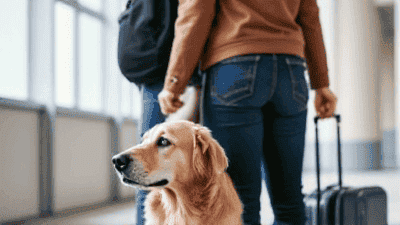
International travel can be an exciting adventure, but it becomes more complex when you’re bringing your furry friend along. Whether you’re relocating, going on an extended vacation, or simply traveling for leisure, taking your pet abroad requires careful planning and preparation. From understanding airline policies to meeting destination-specific requirements, there’s a lot to consider to ensure a smooth journey for both you and your pet.
Traveling with your pet can strengthen your bond and provide comfort, especially during long trips or relocations. However, it’s essential to weigh the benefits against the potential stress and risks involved for your pet.
Not all pets are suited for international travel. Consider your pet’s age, health, and temperament. Older pets, brachycephalic breeds (such as Bulldogs or Persian cats), and animals with chronic health conditions may find travel particularly stressful.
If traveling poses significant risks to your pet’s well-being, consider alternatives like pet-sitting, boarding, or hiring a pet relocation service.

Every country has its own rules and regulations regarding pet entry. Failure to comply can result in quarantine, fines, or even denial of entry.
Contact the embassy or consulate of your destination country for the most accurate and up-to-date requirements. Alternatively, consult official government websites or pet relocation services.
Not all airlines are pet-friendly, and policies can vary widely. Here’s what to consider when selecting an airline for international pet travel.

Schedule a veterinary visit at least a month before your trip to ensure your pet is healthy and up-to-date on vaccinations. Discuss any concerns, such as anxiety or motion sickness, with your vet.
If your pet isn’t already microchipped, consider having one implanted. Additionally, ensure your pet wears a collar with an ID tag displaying your contact information.
In some countries, pets need a “pet passport” that includes vaccination records, health certificates, and other important documents. Check if this is required for your destination.
Pack a travel kit for your pet, including:
Arrive early to allow ample time for check-in and security screening. Be prepared to present all required documents, such as health certificates and vaccination records.
Pets traveling in the cabin must go through security screening. You’ll need to remove your pet from the carrier and carry them through the metal detector while the carrier is X-rayed.
For pets traveling in the cabin:
For pets traveling in cargo:

Upon arrival, you’ll need to present your pet’s documents to customs and immigration officials. Be prepared for additional checks or inspections.
If your destination country requires quarantine, ensure you understand the process and duration. Some countries may allow home quarantine, while others require pets to stay in a designated facility.
Help your pet acclimate to their new environment by:
Dogs are generally more adaptable to travel, but brachycephalic breeds require extra care due to their respiratory issues. Ensure they have access to water and a comfortable carrier.
Cats are sensitive to changes in their environment and may find travel stressful. Use a secure carrier and provide calming aids, such as pheromone sprays, if needed.
Rabbits, guinea pigs, and other small animals require specialized carriers and careful handling. Avoid exposing them to extreme temperatures or loud noises.
Birds are highly sensitive to stress and environmental changes. Ensure their carrier is secure, well-ventilated, and free from drafts.
Travel can be stressful for pets, especially if they’re not accustomed to it. Use calming aids, such as pheromone sprays or anxiety vests, and consult your vet for additional solutions.
Some pets may experience motion sickness during travel. Avoid feeding them for a few hours before the trip and consult your vet about anti-nausea medications.
In the unlikely event that your pet goes missing during travel, contact airline staff and local authorities immediately. Ensure your pet’s microchip and ID tags are up-to-date to increase the chances of a safe return.
Navigating international travel with pets requires careful planning and attention to detail. From researching destination requirements to preparing your pet for the journey, every step plays a crucial role in ensuring a safe and stress-free experience. By understanding the rules, choosing the right airline, and addressing your pet’s needs, you can make international travel with your furry companion a positive and memorable experience. With the right preparation, you and your pet can embark on new adventures together, no matter where in the world you’re headed.